Mystery of missing WW2 pilot solved by Cranfield scientists
- Published
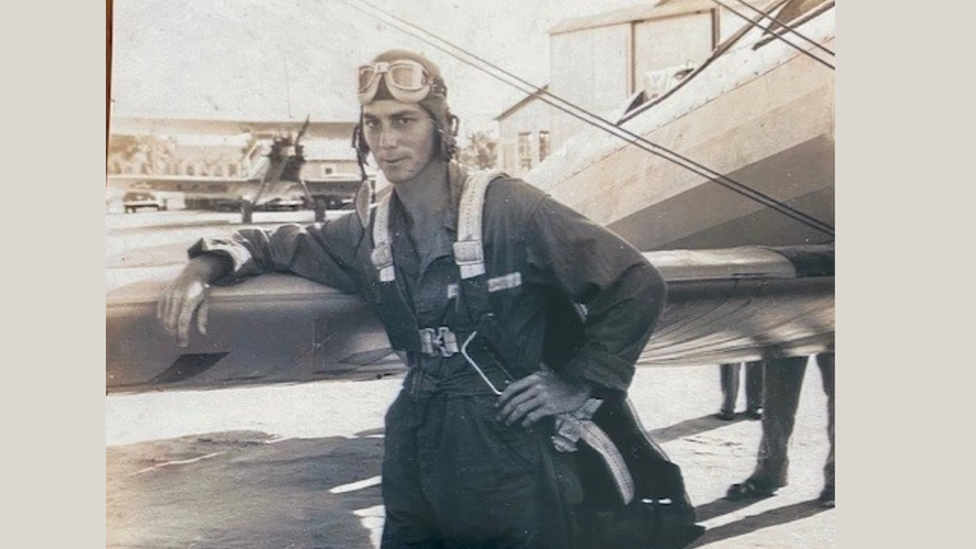
2nd Lt Gilbert Haldeen Myers went missing after his plane crashed over Sicily in 1943
Forensic scientists have helped find a missing US World War Two co-pilot eight decades after his plane crashed.
A team from Cranfield University in Bedfordshire travelled to Sicily to investigate the area his bomber came down in, in July 1943.
Remains of US Army Air Forces (USAAF) 2nd Lt Gilbert Haldeen Myers, 27, from Pittsburgh, were discovered along with plane wreckage.
The university said it was glad it could bring "closure" to his family.
He was one of 72,000 US personnel still unaccounted for from World War Two, Cranfield University said.
The co-pilot was in a B-25 Mitchell bomber from Tunisia on a mission to attack the Sciacca Aerodrome in Sicily, Italy, along with five others.
The bomber was brought down by anti-aircraft fire, landing about 1.5 miles (2.4km) from the aerodrome.
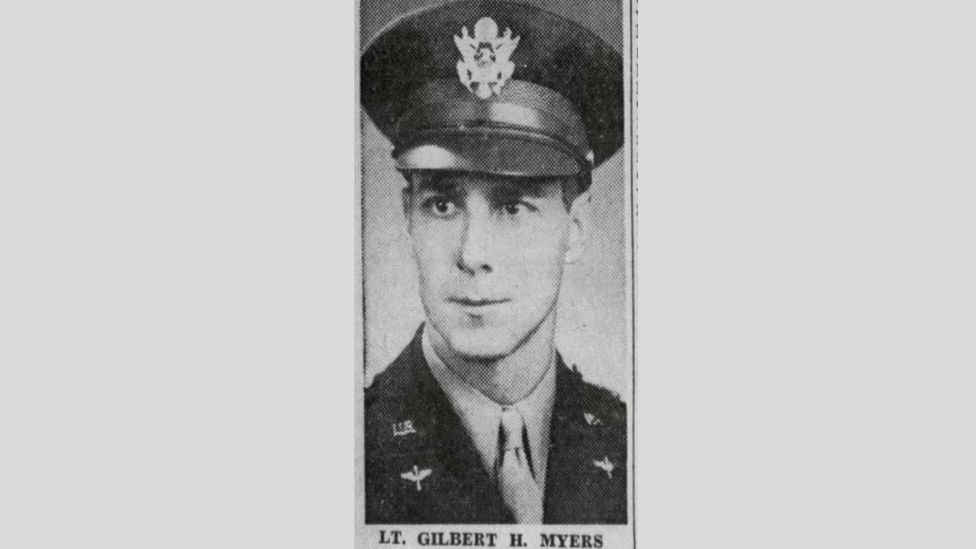
The remains of 2nd Lt Gilbert Haldeen Myers have been identified 80 years on
Witnesses at the time said one crew member bailed out before it crashed. There were no survivors or any record of anybody being taken prisoner.
In 1947, investigators conducted search and recovery operations near Sciacca, but could not find 2nd Lt Myers.
Eighty years on from the crash, forensic experts from Cranfield University's Recovery and Identification of Conflict Casualties team (CRICC) and the US Defense Prisoner of War/Missing in Action Accounting Agency (DPAA) headed to Sciacca to try again.
Twenty people from Cranfield scoured the impact zone, carrying out meticulous examination of tonnes of soil.
In October, investigators announced they had located parts of the wreckage alongside human remains belonging to 2nd Lt Myers. He was identified via DNA analysis in the US.
Dr David Errickson, senior lecturer in Archaeology and Anthropology at Cranfield Forensic Institute, said the excavation site presented a "challenging environment".
Scientists used "wet screening" - a process of passing material through water "to separate and analyse human remains and artefacts".
Dr Errickson said: "The recovery of 2nd Lt Myers' remains not only facilitates a proper full military honours burial, but also allows the family to receive any personal effects found. Most importantly, it brings closure for the families of those missing or killed in action."
Ahead of Remembrance Day, he was buried in St Petersburg, Florida, on 10 November, Cranfield University said.

Follow East of England news on Facebook, external, Instagram, external and X, external. Got a story? Email eastofenglandnews@bbc.co.uk, external or WhatsApp 0800 169 1830
- Published25 May 2021
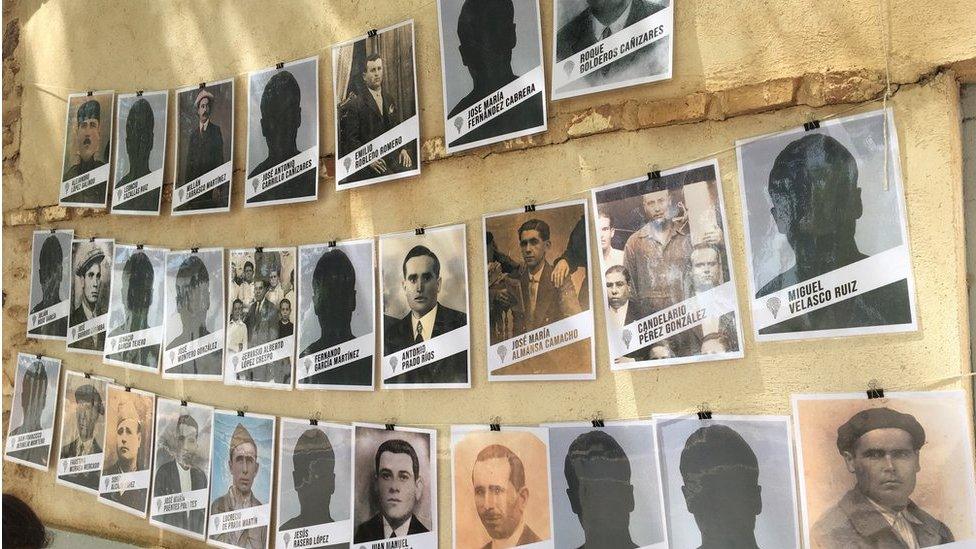
- Published27 March 2023
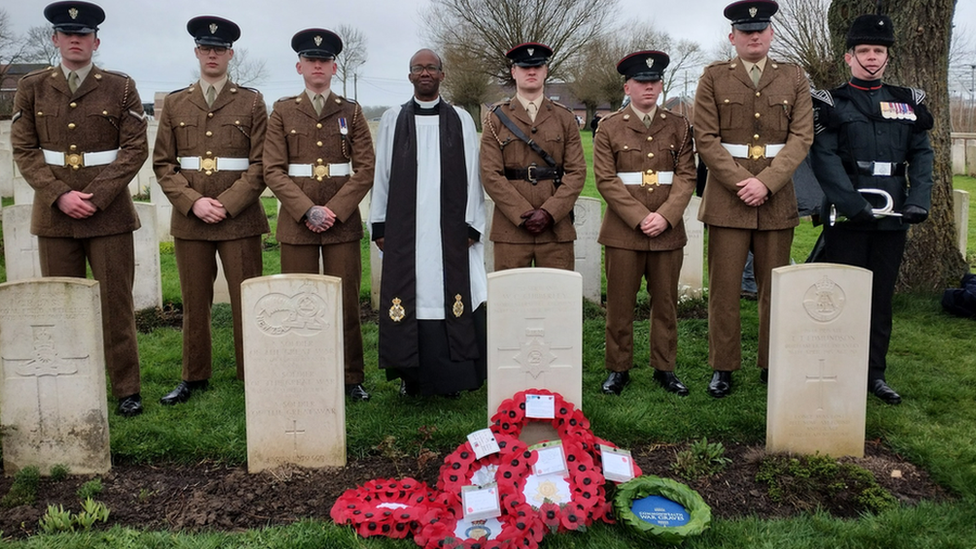
- Published10 May 2023
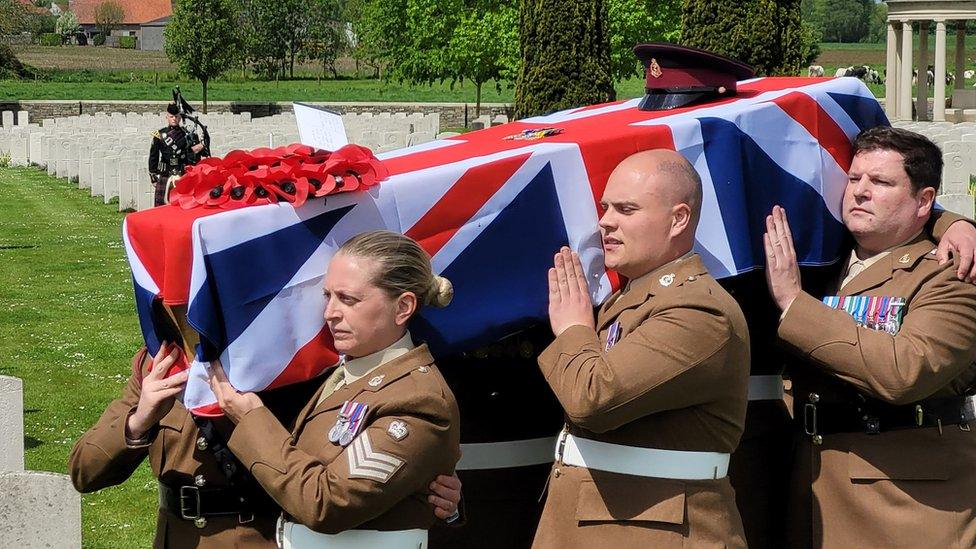
- Published3 July 2023
